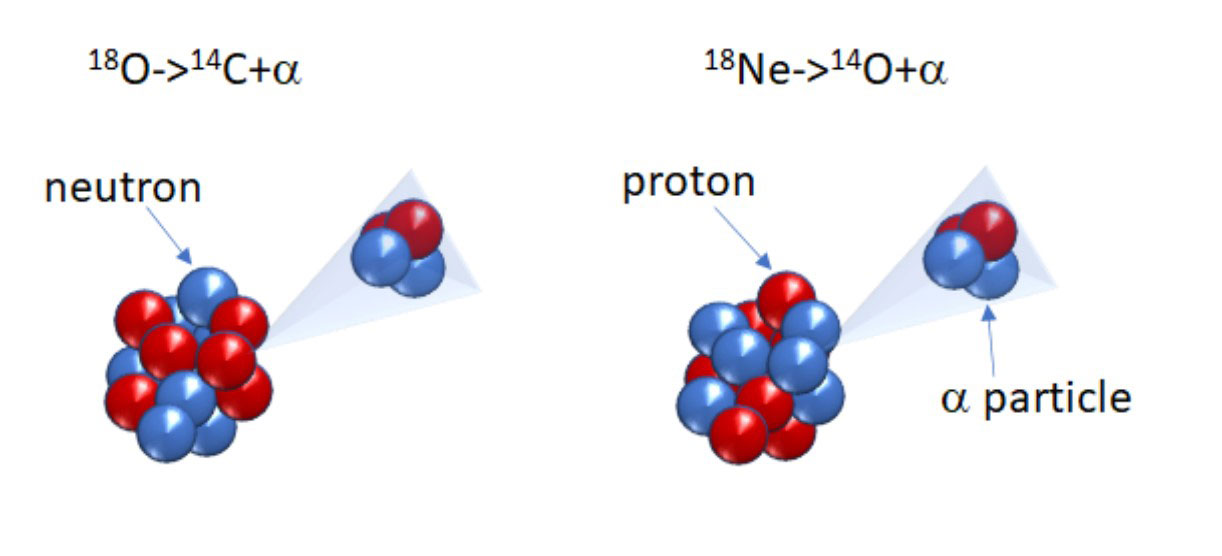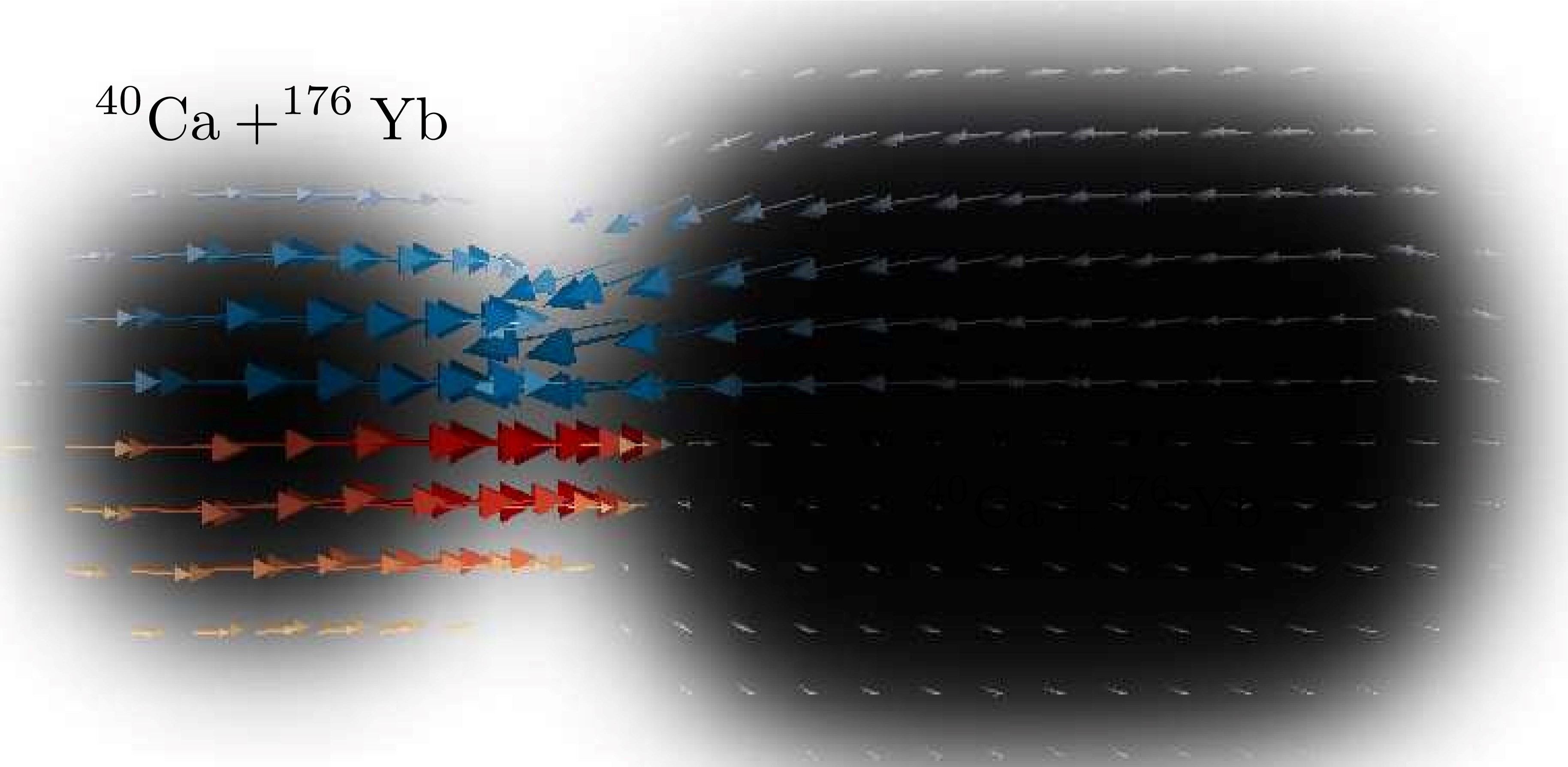Discovering Evidence of superradiance in the Alpha Decay of Mirror Nuclei
Nuclear physicists find evidence of superradiant states by looking at the alpha decay of excited states in mirror nuclei.

The Science
Scientists refer to atomic nuclei as “quantum many-body systems” because they are formed by many particles (nucleons, which include neutrons and protons) that interact with each other in complex ways. Nuclei can absorb energy, placing them into excited states. These states then lose energy through decay and may emit different particles. The various processes of decay and particle emission are called decay channels. The interplay between the internal characteristics of the excited states and the different decay channels gives rise to interesting phenomena. One of these phenomena is superradiance. This occurs when a nucleus reaches a high excitation energy. According to the nuclear shell model, nuclei get excited by promoting nucleons to higher shells. These configurations are called excited states. As the excitation energy available increases, the number of ways the nucleons can be promoted increases, therefore the number of excited states increases. superradiance can take place when excited states are so close to each other that neighboring excited states overlap with each other. If it happens, instead of observing many states, we see only one “superradiant” state.
The Impact
To find evidence of superradiance in nuclei, nuclear physicists look for two systems that have the same internal structure but different decay channels. Mirror nuclei have the same total number of protons and neutrons, but the number of protons in one equals the number of neutrons in the other. The internal structure of mirror nuclei is the same since the nuclear force is the same whether between two protons, two neutrons, or a proton and a neutron. This makes the nuclear force “charge independent.” However, the decay channels are different due to the different electric charge repulsion in the two systems because of the difference in each system’s number of protons. In this study, scientists found evidence of the superradiance effect in the differences between the alpha decaying states in Oxygen-18 and Neon-18.
Summary
Scientists recently studied the structure of Neon-18 by scattering a radioactively unstable beam of Oxygen-14 on a thick Helium-4 gas target. The team included scientists from Texas A&M University, the CEA research institute in France, the University of Birmingham, UK, and Florida State University. The gas target allowed the experimentalists to measure the tracks of the incoming and outcoming particles and produce a complete reconstruction of the nuclear events. The structure of Oxygen-18 was previously studied at Florida State University by scattering Carbon-14 on a Helium-4 target using a particle accelerator. This experiment had very good results, allowing the researchers to use the information about the Oxygen-18 excited states to find the initial parameters for the analysis of the Neon-18 data.
As expected from the charge independence of the nuclear force, the researchers found a correspondence between mirror states in the two nuclei, although some differences emerged when comparing the strength of mirror states. If the internal structure of the nuclei is the same one would expect mirror levels to have the same strength, but in these cases alignment with slightly different decay channels produces observed differences. The researchers interpreted these differences as evidence of the superradiance effect.
Contact
Marina Barbui
Texas A&M University, Cyclotron Institute
barbui@comp.tamu.edu
Funding
This work was supported by the Department of Energy Office of Science and by the UK Science and Technology Facilities Council (STFC).
Publications
Barbui, M., et al., a-cluster structure of 18Ne. Physical Review C 106, 054310 (2022). [DOI: 10.1103/PhysRevC.106.054310]
Avila, M., et al., a-cluster structure of 18O. Physical Review C 90, 024327 (2014). [DOI: 10.1103/PhysRevC.90.024327]
Volya, A., et al., Superradiance on alpha clustered mirror nuclei. Nature Communication Physics 5, 322 (2022). [DOI: 10.1038/s42005-022-01105-9]
Related Links
Mirror nuclei, such as 18O and 18Ne, have the same number of protons and neutrons (18), but while 18O has 8 protons and 10 neutrons 18Ne has 10 protons and 8 neutrons. When they absorb enough energy, they can decay and emit an alpha particle (2 protons and 2 neutrons).
Highlight Categories
Program: NP
Performer: University
Additional: Collaborations , International Collaboration



